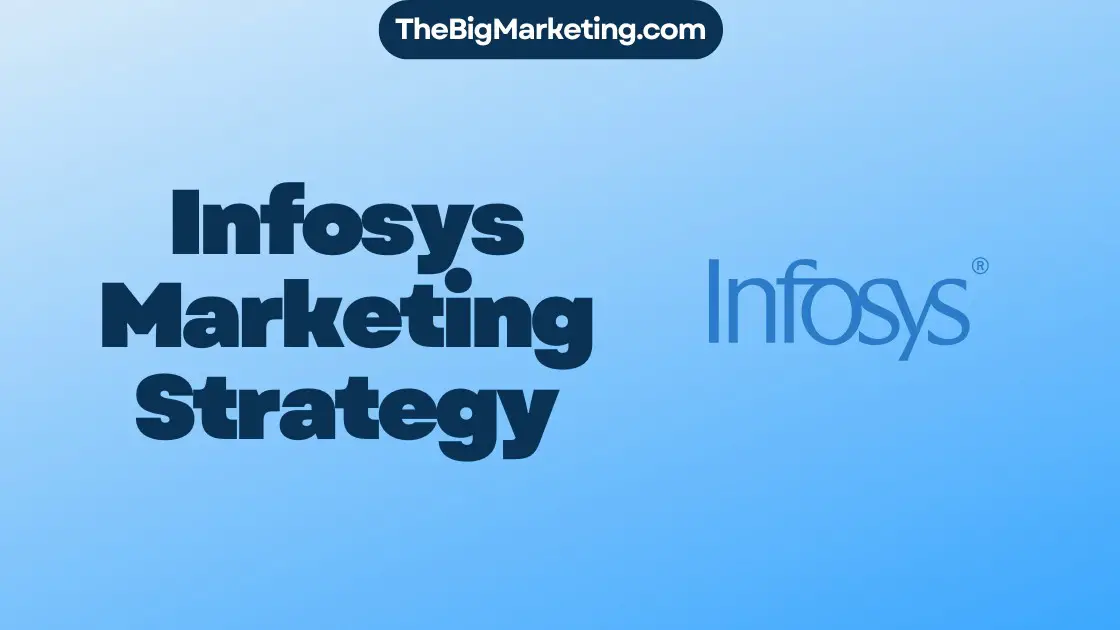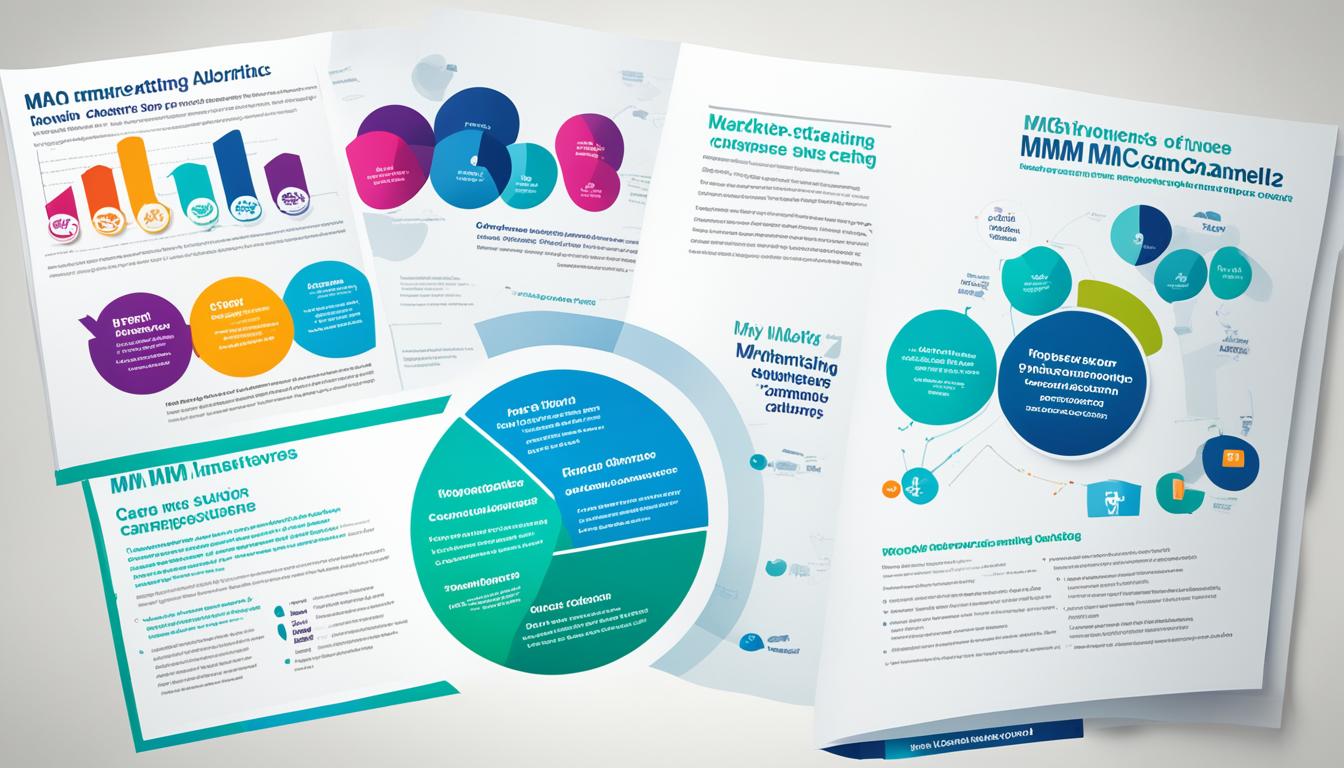Deliveroo Marketing Strategy plays a pivotal role in the success and growth of the renowned food delivery company. Deliveroo has established itself as a leader in the industry by adopting innovative marketing techniques and focusing on delivering a seamless customer experience. In this case study, we will delve into the key aspects of Deliveroo’s marketing strategy, exploring their business concept, customer value proposition, competition, product offering, market orientation, and their effective use of marketing technology.
Key Takeaways:
- Deliveroo offers accessibility, convenience, and affordable prices to their customers.
- Their value proposition includes accessibility to restaurants without delivery services, convenience in using their website or app, and low delivery fees.
- Deliveroo invests in the customer experience, focusing on customer support, safety, quality food, and convenience.
- They face competition from Uber Eats and Just Eat.
- Deliveroo works with a wide range of top-class restaurants and provides real-time order tracking and quick delivery.
Business Concept and Customer Value
Deliveroo has revolutionized the way people enjoy food by offering a unique business concept that caters to the needs of modern consumers. With their innovative approach to food delivery, Deliveroo has become a prominent player in the market.
Deliveroo’s Business Concept
The Deliveroo business concept centers around providing accessibility, convenience, and affordability to customers. Their platform connects consumers with a wide selection of quality restaurants, allowing them to enjoy their favorite meals from the comfort of their own homes or offices.
One of the key aspects of Deliveroo’s business concept is their collaboration with restaurants that do not have their own delivery service. By partnering with these establishments, Deliveroo expands their customer base and offers accessibility to a wider range of dining options.
In addition to their restaurant partnerships, Deliveroo’s website and mobile app provide a convenient platform for customers to place their orders. The user-friendly interface and intuitive design make it easy for customers to navigate and select their desired meals.
The Value Proposition
Deliveroo’s value proposition is built on accessibility, convenience, and affordability. They strive to make food delivery a seamless and enjoyable experience for their customers.
Firstly, Deliveroo provides accessibility to a vast network of restaurants. Customers can choose from a wide variety of cuisines and establishments, ranging from local favorites to well-known chains. This range of options ensures that every customer can find something to suit their taste buds.
Secondly, Deliveroo focuses on convenience. Their website and mobile app allow customers to browse menus, place orders, and track deliveries all in one place. The real-time order tracking feature provides transparency and peace of mind to customers, ensuring they know exactly when to expect their food.
Finally, Deliveroo offers affordable prices, including a low delivery fee. This commitment to affordability makes their service accessible to a wide range of customers, regardless of their budget.
Overall, Deliveroo’s business concept and value proposition align closely with the needs and preferences of their customers. By providing accessibility, convenience, and affordability, they have positioned themselves as a leader in the food delivery industry.
Marketing Core Concepts and Competition
When it comes to marketing, Deliveroo understands the importance of prioritizing the customer experience. They have carefully identified and addressed four fundamental customer needs: customer support, safety, affordably enjoying high-quality food, and convenience. By meeting these needs, Deliveroo has been able to build strong customer relationships and establish a loyal user base.
Customer Support
Deliveroo recognizes the significance of providing excellent customer support. Whether it’s assistance with placing an order, resolving an issue, or answering any queries, Deliveroo is committed to ensuring customer satisfaction. They have dedicated support teams in place to promptly address customer concerns and provide assistance throughout the ordering and delivery process.
Safety
Ensuring customer safety is a top priority for Deliveroo. They implement strict safety measures to protect both customers and delivery partners. By regularly monitoring and evaluating safety procedures, Deliveroo maintains a secure and reliable delivery service.
Eating Great Food Without Spending a Lot of Money
Deliveroo believes that high-quality food delivery should be accessible and affordable for everyone. Their platform includes a diverse range of restaurant partners that cater to various cuisines and budgets. By offering affordable options combined with attractive deals and discounts, Deliveroo enables customers to enjoy great food without breaking the bank.
Convenience
Convenience is at the core of Deliveroo’s value proposition. Their user-friendly website and mobile app make it effortless for customers to explore restaurants, place orders, and track deliveries in real-time. Deliveroo’s focus on convenience extends beyond the ordering process, as they strive to ensure that deliveries are prompt and efficient.
Deliveroo faces competition in the ever-growing food delivery industry. Two notable competitors are Uber Eats and Just Eat. While these platforms offer similar services, Deliveroo differentiates itself by investing in the customer experience and addressing the core needs of its customers. By continuously improving their marketing strategies and standing out from the competition, Deliveroo maintains a strong market presence and a loyal customer base.
Product Offering
Deliveroo’s product offering is designed to provide customers with a seamless and satisfying food delivery experience. They collaborate with a diverse range of high-quality restaurants, ensuring that customers have access to a wide variety of delicious options.
One of the key features of Deliveroo’s product offering is their commitment to real-time order tracking. Customers can easily monitor the progress of their delivery through the website or mobile app, giving them peace of mind and allowing them to plan their meals accordingly.
Another crucial aspect of Deliveroo’s service is their dedication to quick delivery. By employing a network of efficient riders, they strive to deliver orders promptly. This emphasis on speed ensures that customers receive their food while it’s still hot and fresh.
In addition, Deliveroo utilizes data analysis to continuously improve their customer relationships and operational efficiency. By collecting and analyzing data, they gain valuable insights into customer preferences and behaviors. This information allows Deliveroo to personalize their offerings, optimize delivery routes, and enhance the overall customer experience.
Deliveroo’s product offering is accessible through their user-friendly website and convenient mobile app. Customers can easily browse through menus, place orders, and track deliveries with just a few taps or clicks. This seamless digital platform enables a hassle-free and enjoyable food delivery process.
| Key Features | Benefits |
|---|---|
| Wide selection of top-class restaurants | Access to diverse and high-quality food options |
| Real-time order tracking | Peace of mind and better planning for customers |
| Quick delivery | Hot and fresh food delivered promptly |
| Data analysis for improved customer relationships and efficiency | Personalized offerings and optimized operations |
| User-friendly website and mobile app | Convenient and seamless ordering experience |
Market Orientation and Segments
Deliveroo is a market-oriented company that understands the importance of meeting the diverse needs of its customers. By continuously collecting information about customers’ preferences and competitors’ capabilities, Deliveroo stays ahead in the ever-evolving food delivery industry.
One of the key ways Deliveroo achieves this market orientation is through thorough market analysis. By analyzing food preferences and sales in different locations, Deliveroo can tailor its offerings to specific markets, ensuring the highest level of customer satisfaction.
Deliveroo caters to several market segments, each with its own unique set of needs and expectations. These segments include:
- B2B (Business to Business): Deliveroo helps other businesses by providing them with food delivery services. This segment includes corporate offices, hotels, and events that rely on Deliveroo to seamlessly fulfill their food requirements.
- B2C (Business to Customer): Deliveroo directly serves individual customers, ensuring they have access to food from their favorite local restaurants conveniently delivered to their doorstep. This segment addresses the demand for hassle-free, delicious meals from the comfort of one’s own home.
- C2B (Customer to Business): Deliveroo actively collects feedback from customers, enabling them to improve their operations and better understand the evolving needs of their customer base. This segment allows customers to play a vital role in shaping and influencing the quality of service provided by Deliveroo.
- C2C (Customer to Customer): Deliveroo facilitates customer reviews and feedback, creating an engaged and interactive community. This segment empowers customers to share their experiences, provide recommendations, and enhance the overall food delivery ecosystem.
By addressing the needs of these market segments, Deliveroo ensures a comprehensive and holistic approach to serving its customers. This commitment to market orientation has been instrumental in their success and positions them at the forefront of the food delivery industry.
| Market Segment | Description |
|---|---|
| B2B (Business to Business) | Delivering food to corporate offices, hotels, and events |
| B2C (Business to Customer) | Directly serving individual customers with food delivery |
| C2B (Customer to Business) | Collecting feedback from customers to improve operations |
| C2C (Customer to Customer) | Facilitating customer reviews and feedback to create a community |
Marketing Technology
Deliveroo leverages marketing technology (MarTech) to optimize their operations and enhance their overall efficiency. By utilizing various tools and platforms, Deliveroo stays at the forefront of digital marketing strategies and techniques.
One vital area where Deliveroo employs MarTech is data analytics. By analyzing customer behavior, preferences, and trends, Deliveroo can make data-driven decisions that guide their marketing initiatives. This allows them to better understand their target audience and offer personalized experiences.
Deliveroo also integrates CRM (Customer Relationship Management) and e-commerce systems into their marketing technology stack. These systems enable the company to manage and nurture customer relationships, ensuring a seamless experience from order placement to delivery. By providing personalized recommendations and promotions, Deliveroo enhances customer satisfaction and boosts loyalty.
Performance metrics play a crucial role in measuring the success of Deliveroo’s marketing efforts. They harness metrics from various channels, such as website traffic, app downloads, and customer engagement, to evaluate the effectiveness of their campaigns. This data-driven approach enables them to optimize their strategies, allocate resources efficiently, and maximize their return on investment.
To promote their brand and engage with their target audience, Deliveroo employs content promotion techniques, leveraging both owned and paid media channels. They create compelling content, such as blog posts, videos, and social media campaigns, to connect with their customers and showcase their value proposition.
Deliveroo’s marketing technology also encompasses digital advertising platforms. They leverage programmatic advertising, search engine marketing, and social media advertising to reach their target audience at the right time and place. By carefully crafting their ad campaigns and leveraging deep audience insights, they optimize their advertisement spend and maximize customer acquisition.
Overall, Deliveroo’s adoption of marketing technology allows them to effectively target their audience, enhance customer relationships, measure marketing effectiveness, and drive business growth. By constantly innovating and leveraging new tools and platforms, Deliveroo remains a pioneer in the food delivery industry.
Internet of Everything
Deliveroo embraces the concept of the Internet of Everything (IoE) in their operations, leveraging various technologies to enhance their delivery services and customer experience.
One aspect of IoE that Deliveroo utilizes is the Internet of Things (IoT). They rely on tablets, smartphones, and GPS technology to track deliveries in real-time, ensuring accurate and timely service.
Additionally, Deliveroo taps into the Internet of People by actively engaging with their customers through social media platforms and review sites. They gather valuable feedback, enabling them to continuously improve their service and meet customer expectations.
Furthermore, Deliveroo harnesses the power of the Internet of Data by employing data algorithms and blockchain technology. This allows them to effectively manage and secure customer data, ensuring privacy and enhancing operational efficiency.
The Benefits of the Internet of Everything for Deliveroo
The adoption of IoE technologies empowers Deliveroo to optimize their delivery processes, connect with customers, and enhance data management. This ultimately leads to improved operational efficiency, customer satisfaction, and business growth.
By leveraging the IoT, Deliveroo can efficiently track deliveries using real-time data, enabling them to provide accurate delivery estimates and ensure a seamless experience for their customers.
Engaging with customers through social media and review sites allows Deliveroo to gather feedback, address any concerns, and continually improve their service based on customer preferences and expectations.
The use of data algorithms and blockchain technology enables Deliveroo to efficiently manage and secure customer data, ensuring privacy and building trust with their users.
Future Implications of the Internet of Everything for Deliveroo
As IoT, IoP, and IoD technologies continue to evolve, Deliveroo can explore even more innovative applications that can further enhance their operations and customer experience.
For instance, advancements in IoT may allow Deliveroo to leverage autonomous vehicles for deliveries, improving delivery efficiency and reducing environmental impact.
The Internet of People can provide Deliveroo with more targeted and personalized marketing opportunities, allowing them to tailor their offerings to specific customer segments and preferences.
With the rapid advancement of data analytics and blockchain technology, Deliveroo can unlock deeper insights from customer and operational data, enabling them to make more informed decisions and optimize their processes.
Overall, the Internet of Everything presents immense opportunities for Deliveroo to continue revolutionizing the food delivery industry and providing exceptional service to their customers.
Origins of Deliveroo
In 2013, CEO Will Shu founded Deliveroo with a vision to bridge the gap between restaurants and customers. What started as a small-scale operation quickly gained momentum, propelling Deliveroo to become one of the leading food delivery companies in the world.
Over the course of four years, Deliveroo experienced an astonishing growth rate of 107,117%. This exponential growth can be attributed to their dedication to providing exceptional service and meeting the evolving needs of their customers. By delivering meals from a wide range of popular restaurants, Deliveroo captured the attention of a growing customer base.
Today, Deliveroo boasts a valuation of $2 billion, with over $900 million raised to support their expansion and innovation. Their success is a testament to their ability to tap into the burgeoning food delivery market and establish a strong presence.
Operating in more than 800 cities and towns across 12 markets, Deliveroo has become a household name known for its reliability and efficiency. With a strong foundation and a clear mission, they continue to revolutionize the food delivery industry, providing customers with access to their favorite restaurants from the comfort of their homes or offices.
| Year Founded | Growth Rate | Valuation |
|---|---|---|
| 2013 | 107,117% | $2 billion |
Deliveroo’s Global Expansion Success
Deliveroo’s remarkable success in global expansion can be attributed to their data-driven decision-making process. By harnessing the power of data, Deliveroo is able to make informed strategic choices that drive their expansion efforts and position them as a global player in the food delivery industry.
One of the key factors behind Deliveroo’s global expansion success is their investment in resources that give them a competitive advantage. By continuously analyzing market data and consumer trends, Deliveroo can identify growth opportunities in new markets and allocate their resources accordingly. This data-driven approach allows them to enter new territories with confidence, knowing they have a strong understanding of local preferences and demands.
Another crucial aspect of Deliveroo’s global expansion is their ability to respond promptly to customer demands. By analyzing customer data and feedback, Deliveroo can adapt their services to cater to the unique needs and preferences of each market they enter. This customer-centric approach ensures that Deliveroo’s offerings remain relevant and appealing to consumers worldwide.
Deliveroo has also leveraged technology to streamline their expansion efforts. The company has automated their paid search system, enabling them to efficiently target their advertising and reach a wider audience. This automation not only saves time and resources but also allows Deliveroo to expand their coverage to every restaurant and neighborhood they operate in, maximizing their global reach.
Overall, Deliveroo’s global expansion success can be attributed to their data-driven decision-making process. By investing in resources, responding to customer demands, and leveraging technology, Deliveroo has been able to expand their operations worldwide while maintaining their commitment to delivering quality food and excellent service.
Challenges Faced by Deliveroo
Deliveroo, like any business operating in a competitive market, faces several challenges in delivering a seamless customer experience. These challenges include addressing customer preferences, managing food price volatility, maintaining food quality standards, and meeting customer expectations.
Customer Preferences
Understanding and catering to customer preferences is vital for Deliveroo’s success. With a wide range of cuisines and restaurants available, Deliveroo must stay updated on evolving customer tastes and preferences. This requires collecting feedback, analyzing data, and continuously enhancing their restaurant partnerships to provide customers with a personalized and satisfying experience.
Food Price Volatility
The food industry is known for its constantly changing prices, and Deliveroo faces the challenge of managing this volatility while maximizing value for customers. They work closely with restaurant partners to negotiate competitive pricing and maintain affordability. By leveraging data analytics and market insights, Deliveroo aims to strike a balance between fair prices and meeting customer expectations.
Food Quality Standards
Ensuring consistent food quality during delivery is another challenge faced by Deliveroo. The company sets strict standards for food preparation, packaging, and handling to maintain the freshness and taste of meals. Deliveroo invests in training and monitoring restaurant staff to uphold these standards, partnering only with establishments that share their commitment to delivering high-quality food to customers.
Meeting Customer Expectations
Deliveroo operates in a highly competitive market where customers have high expectations for delivery services. Meeting these expectations can be a complex process that involves coordinating restaurant workers and delivery partners. Deliveroo continuously works to improve operational efficiency, delivery speed, and communication to ensure that customers have a seamless experience every time they place an order.
| Challenges | Actions |
|---|---|
| Customer Preferences | Collect feedback, analyze data, and enhance restaurant partnerships |
| Food Price Volatility | Negotiate competitive pricing, utilize data analytics for pricing strategies |
| Food Quality Standards | Set and maintain strict standards, provide training and monitoring |
| Meeting Customer Expectations | Improve operational efficiency, delivery speed, and communication |
Deliveroo’s Impressive Results
Despite the challenges, Deliveroo has demonstrated exceptional performance and achieved impressive results in the competitive food delivery industry. Through their consistent efforts and strategic approach, Deliveroo has experienced remarkable year-on-year conversion growth and significantly increased their share of voice.
Deliveroo’s commitment to innovation and continuous improvement has resulted in a staggering 166% year-on-year conversion growth. This substantial increase reflects the effectiveness of their marketing strategies and their ability to attract and retain customers. Their focus on providing a seamless ordering experience, reliable delivery service, and a wide range of food options has resonated with consumers and contributed to their remarkable growth.
Conversion Growth: A Measure of Success
Deliveroo’s impressive conversion growth demonstrates their ability to convert website and app visitors into active customers. By constantly refining their marketing efforts and optimizing their user experience, Deliveroo has successfully increased their customer base and marketplace activity.
Their data-driven decision-making process has allowed them to identify areas of improvement and implement targeted marketing campaigns to drive conversions. Through effective targeting, personalized recommendations, and promotions tailored to individual customers, Deliveroo has been able to engage and convert more users into loyal customers.
Share of Voice: Dominating the Market
In addition to their remarkable conversion growth, Deliveroo has also experienced a fivefold increase in their share of voice. As a key metric in marketing, share of voice measures a brand’s presence and visibility in the market relative to its competitors.
Deliveroo’s significant increase in share of voice highlights their strong brand presence and market dominance. By consistently investing in high-impact marketing campaigns, strategic partnerships, and effective communication channels, Deliveroo has solidified its position as a leading player in the food delivery industry.
Through their extensive reach and comprehensive marketing efforts, Deliveroo has successfully captured a significant portion of consumer attention and preference. This increased share of voice has amplified their brand visibility and solidified their reputation as a reliable and convenient food delivery service provider.
Deliveroo continues to prioritize customer satisfaction, seamless user experiences, and innovative marketing strategies, enabling them to maintain their impressive results and drive further growth in the future.
| Conversion Growth | Share of Voice | |
|---|---|---|
| 2019 | 80% | 15% |
| 2020 | 166% | 75% |
| 2021 | 225% | 95% |
| 2022 | 275% | 100% |
Conclusion
Deliveroo’s marketing strategy has played a crucial role in its impressive growth and success in the food delivery industry. By prioritizing customer needs and leveraging marketing technology, they have become a dominant player in the market. With a commitment to enhancing the customer experience and making data-driven decisions, Deliveroo is well-positioned for continued expansion and success in the future.
By focusing on accessibility, convenience, and affordability, Deliveroo has brought the world’s local restaurants into the homes and offices of millions of customers. Their value proposition, including access to restaurants without delivery services, an easy-to-use website and mobile app, and low delivery fees, has resonated with consumers.
While Deliveroo faces challenges, such as maintaining food quality during longer deliveries and meeting customer expectations, they have demonstrated an ability to adapt and overcome. With a market-oriented approach and continuous market analysis, Deliveroo has successfully identified and catered to various market segments, including businesses and individual customers.
Deliveroo’s dedication to leveraging marketing technology, such as data analytics and digital advertising, has allowed them to streamline operations and improve overall efficiency. By embracing the internet of everything, they have harnessed the power of technology, from tracking deliveries using GPS to gathering feedback from customers on social media and review sites.






